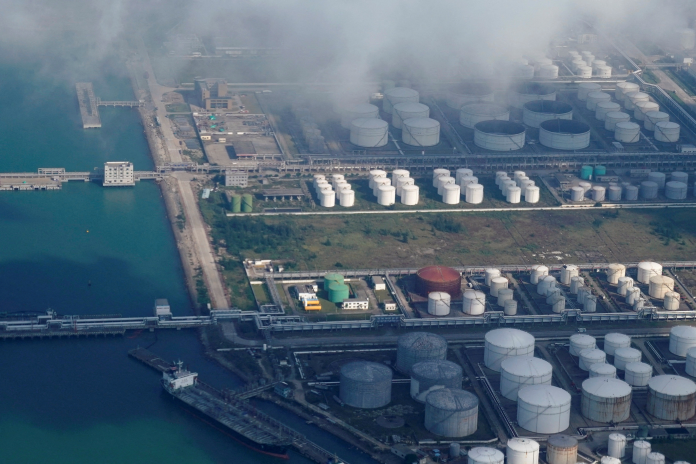China’s National Statistics Bureau (NSB) released monthly data indicating that the country added approximately one million barrels per day (BpD) of crude oil to its commercial and strategic stockpiles in May. This increase in oil stockpiles occurred despite China’s soft imports of oil being outweighed by already weak refinery processing volumes.
What You Need to Know
China added approximately 1.08 million BpD of crude oil to its commercial and strategic stockpiles in May 2024, an increase of 250,000 BpD from the previous month. Over the first half of the year, the country’s stockpiles grew by about 790,000 BpD compared to the same period in 2023. Despite an increase in refinery processing rates to 15.33 million BpD, this was a decrease of 50,000 BpD from May 2023. The surplus oil available for reserves was calculated after considering domestic output and imports.
The Details
China’s aggressive stockpiling indicates a strategic move to brace for potential economic growth in the latter half of 2024 and safeguard against possible supply chain disruptions. The 790,000 BpD increase suggests the government is optimistic about economic recovery starting in June 2024. However, various ongoing economic issues, such as the prolonged housing crisis and low consumer consumption, cast doubt on this projection.
National Statistics Bureau Data: China’s crude oil inventories increased by at least 1.08 million BpD in May, rising by approximately 250,000 BpD from April. Over the first half of 2024, China increased its stockpiles by about 790,000 BpD compared to the same period in 2023. The inventory growth rate accelerated in early 2024, with a 90,000 BpD increase from the same time in 2023.
Refinery Processing Rates: May 2024 saw an increase in the refinery processing rate to 15.33 million BpD, which is 50,000 BpD less than May 2023. The decline in processing rates did not lead to a surplus in processed oil, allowing for a surplus of 1.08 million BpD to be added to strategic reserves.
Why It Matters
China’s increase in crude oil in May indicates the country is preparing for a potential increase in economic growth in the second half of 2024. However, the increased stocks would also serve a dual purpose, allowing China to regrow its depleted oil supply. The 790,000 BpD increase indicates that the Chinese government projects economic growth to begin in June 2024. However, this projection is unlikely given the various issues currently affecting the Chinese economy.
The most significant issue is the ongoing housing crisis, which has been affecting the economy since it began in August 2021. The crisis caused thousands of potential homeowners to lose their life savings throughout China as real estate companies defaulted or went bankrupt. Furthermore, the financial contagion spread to China’s shadow banking industry, leading to a severe downturn and, in some cases, the bankruptcy of several investment firms.
Another major issue is the low consumption by Chinese consumers, stemming from economic uncertainty, geopolitical tensions, and the housing crisis. Chinese consumers are now more inclined to save their money instead of spending it on domestically produced items. The lack of consumption means that Chinese firms are facing less demand for the various products they produce, leading to an oversupply of products. This decrease in demand will also have significant third-order effects such as decreased wages, layoffs, and reduced job opportunities due to the lack of production. However, decreased consumption and lack of production could lead to deflation across the Chinese economy.
The increase in oil would allow China to regrow its strategic oil reserves to their previous levels before 2023. China’s strategic oil reserves saw significant decreases throughout 2023 after the country abandoned its travel restrictions to halt the spread of COVID-19 during the pandemic’s height. The removal of restrictions led to increased travel throughout China, which caused heightened consumption of fuel. This increase in travel coincided with several significant Chinese holidays, such as the Lunar New Year and the Mid-Autumn Festival. However, the travel surge largely dissipated in the last months of 2023, allowing China to stop utilizing the reserve. This decrease in usage allowed China to begin replenishing its reserves by storing the surplus from refining its domestic crude oil and imports. The government, however, is hamstrung in its ability to buy crude oil to replenish the reserve due to various economic issues, which is why it chose to rely on the refinement process to refill its reserves.

